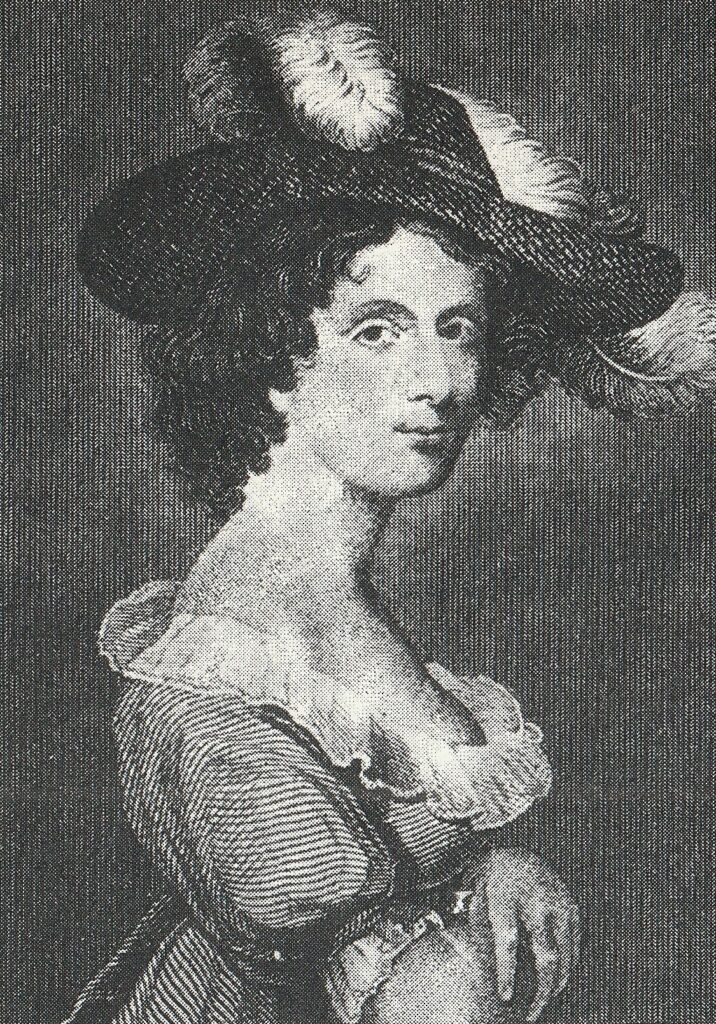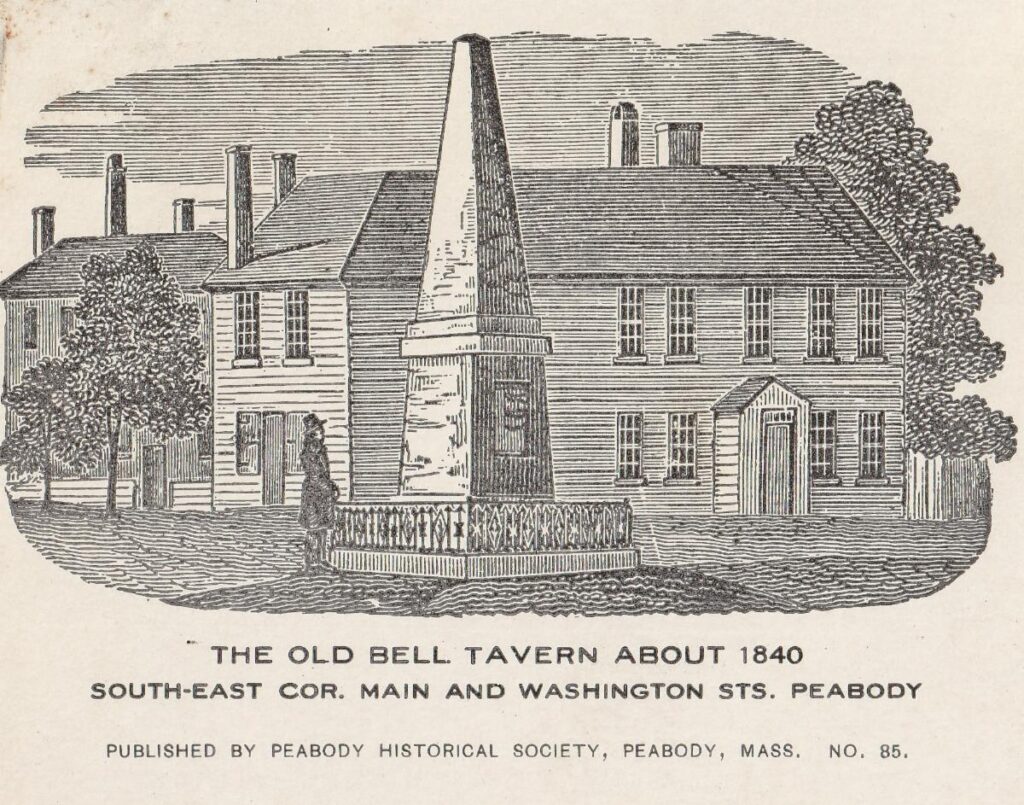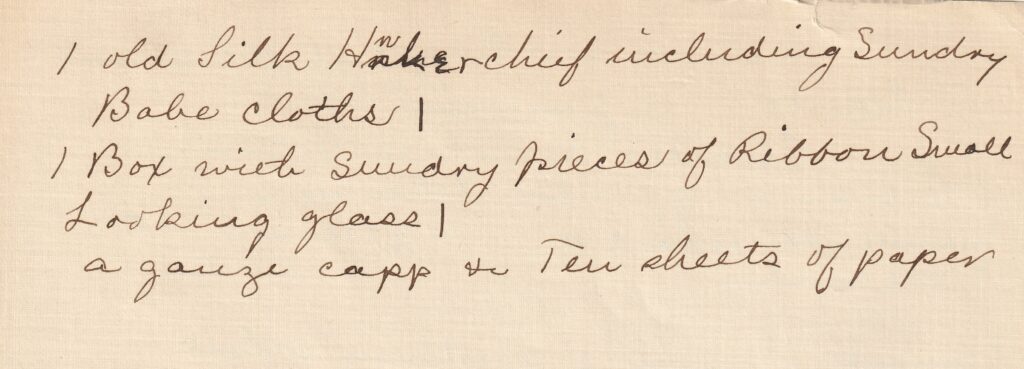Elizabeth Whitman’s story may not have been preserved by time, had a female author not penned a bestselling novel, based on her life.
Born in 1752, Whitman was the daughter of a Connecticut minister and his wife.
Well-educated, and widely admired for her poetry and music, the young Elizabeth had many suitors. Whitman was engaged twice, but ultimately did not marry these suitors. At the age of 37, she was pregnant and unmarried. To this day, the father of her child is unknown. Whitman chronicled her life in letters to friends, in which she referred to her lover only as “Fidelio.”

based on real-life Elizabeth Whitman.
Engraved by James Eddy
Whitman took a coach from her family’s home in Hartford, Connecticut, stopped briefly in Watertown and then traveled onto Danvers (now Peabody). In June 1788, she took up residence in the Bell Tavern under the assumed name “Mrs. Walker” and stated that her husband would be joining her in time.

Elizabeth Whitman died alone on July 25th, 1788, after having given birth to a stillborn child. Her real name remained a mystery, and town residents took it upon themselves to determine her true identity and provide her with a respectable burial. After her story was published in the local paper, along with a list of her belongings, she was identified.


To the left: This wallpaper fragment from the Bell Tavern is believed to be from Elizabeth Whitman’s room; it was removed in 1840 prior to demolition of the Bell Tavern.
Elizabeth Whitman’s place in history was cemented when author Hannah Webster Foster fictionalized her tale in the work The Coquette or, The History of Eliza Wharton, published in 1797. Foster wrote the best-selling novel, changing Whitman’s name to Eliza Wharton, and telling her story in the manner of a cautionary tale to young women about the dangers of following your heart. Hannah Webster Foster is considered one of the first published, female romance novelists in the United States.


The Peabody Historical Commission erected a new headstone, next to the original in 2004. Currently, the Peabody Historical Commission, in partnership with Epoch Preservation, is restoring the historic gravestones of the Old South Burying Ground.
This week’s email was written and researched by Staff Curator Kelly Daniell, with some additions by Assistant Curator Nora Bigelow.
References
“Love, A Touching Episode: Salem Scenes in Eliza Wharton’s Life” The Sunday Boston Herald, August 31, 1902.
Bolton, Charles K. The Elizabeth Whitman mystery at the old Bell tavern in Danvers; a study of “Eliza Wharton,” the heroine of a famous New England romance, Published by the Peabody Historical Society, 1912.
Wells, John. The Peabody Story, Published by the Essex Institute, 1973, pages 261-264.
Smoller, Sudi. “Eliza Wharton (Elizabeth Whitman)”. Presentation given for Women’s History Month, February 28, 1999.
